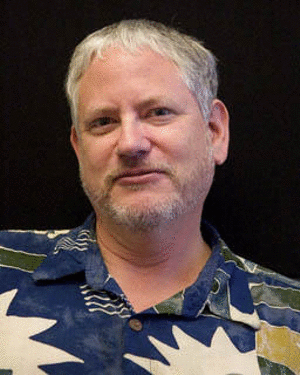
|
|
Andy Witkin,
Senior Scientist (In memoriam)
Andrew Witkin, an Academy Award (c) winning senior scientist at Pixar Animation Studios died Sunday, Sept. 12, 2010 while scuba diving off the coast of Monterey California. He was 58 years old.
Witkin received a B.A. in Psychology from Columbia College in 1975 and
a Ph. D. in Psychology from M.I.T. in 1980. He then joined the
Schlumberger Palo Alto Research Laboratory, where he led a research
program in computer vision and graphics. At Schlumberger, Witkin
developed the technique of "Scale-Space Filtering," now a classic
method of analyzing signals with important features at different
scales.
Witkin was one of the first to recognize the importance of the
relationship between computer vision and computer graphics --- they
are essentially inverse problems. In computer vision, one shows the
computer a picture and asks it to infer what is there. In computer
graphics, one tells the computer what is there, and asks it to create
a picture. Nonetheless, in the early 80s, the vision and graphics
research communities were largely disjoint. Witkin bridged the gap in
a series of landmark papers that he co-authored, included his 1987
prize winning paper "Constraints on deformable models: Recovering 3D
shape and non-rigid motion" and "Snakes: active contour
models". (According to CiteSeer, the Snakes paper is the eleventh most
cited computer science paper.) These papers popularized the idea that
computer vision techniques could provide interactive "power assists"
to a human operator creating computer graphics models. In 2001, he was
honored by ACM SIGGRAPH, the main computer-graphics professional
society, with the prestigious Computer Graphics Achievement Award for
the depth and breadth of his accomplishments.
In 1988, Witkin became a professor at Carnegie Mellon University where
he taught for 10 years, training a group of students who have in their
turn become influential researchers. At Carnegie Mellon, his interests
turned towards problems of producing computer graphics using
physically-based simulation. In 1988 Witkin's "Spacetime Constraints"
paper introduced the idea of using control theory in computer graphics
to produce compelling animated characters. In 1992, he won the Golden
Nica Award from Ars Electronica for an art piece created using
simulated chemical reactions to synthesize organic looking textures.
In 1998, Witkin joined Pixar Animation Studios and began working on a
series of ground-breaking technologies used in the production of Pixar
films. Specializing in the use of simulated physics in animation, he
developed software to create realistic movement of virtual clothing,
hair, fur and water that were instrumental in creating the characters
in "Monster's, Inc.", "The Incredibles," and other films. In 2006, he
was honored by the Academy of Motion Picture Arts and Sciences with an
Academy Award (c) for "pioneering work in physically-based
computer-generated techniques used to simulate realistic cloth in
motion pictures." He recently developed new techniques for simulating
hair in the upcoming Disney * Pixar feature film "Brave." "We will
always have Andy to thank for the life and energy his work has brought
to our characters," says Bill Wise, a Supervising Technical Director
at Pixar Animation Studios. "Andy was a real pioneer in our industry
and I feel very lucky to have gotten to work with him over the
years. I worked closely with him first on 'The Incredibles' and I know
without his help we would not have had the amazing characters we did
for that film. He loved the excitement of production and seeing his
tools used to put beauty on the screen."
A man of many interests, he enjoyed playing guitar and ukulele,
gourmet cooking, and photography. Most of all, he valued time spent
with his family. Witkin is survived by his wife Sharon, mother Evelyn,
brother Joe, and two college-age daughters, Emily and Anna.
|


